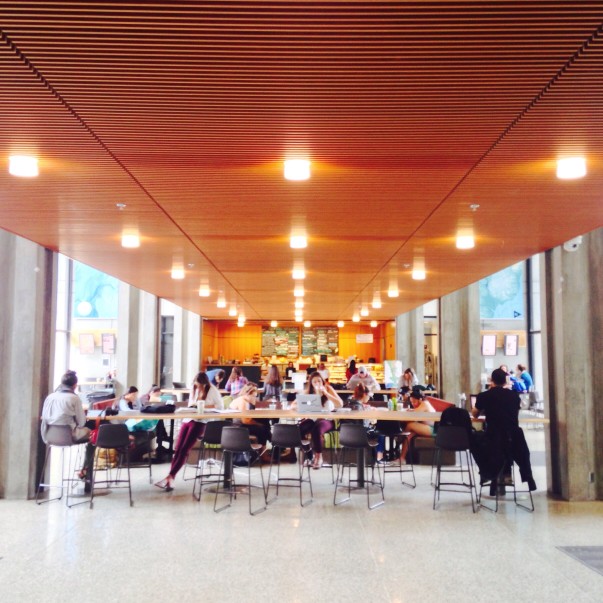Emilio Rodriguez was a 2018-2019 Young Scholar Awards Program recipient. He attended Trinity Western University and majored in international relations.
Protection to refugees has a well-established legal tradition. But almost everywhere in the Western world, these protections are currently a matter of strong disagreement. In many cases, immigrants and refugees are so central to the political and social discussion that political agendas constructed around tougher migratory controls win elections. In such an adverse political climate, the most effective way to advocate for refugee protection is through realistic policies that are suitable for the distinct institutions and realities of each country, while also considering state goals.
My research assesses the effectiveness of the Mexican refugee system in its treatment of current Central American asylum seekers. I argue that effective refugee protection for Central Americans requires an approach that recognizes the complexities of adopting international norms, and that seeks to institutionalize and implement protection at the Mexican domestic level. Through this international-to-national analysis, I defend that the case for refugee protection must focus on finding convergence between humanitarian support and state goals. It rests on the premise that serious consideration of the role of humanitarian norms and institutions in policymaking does not require the abandonment of an interest-based, rational actor model of policy analysis.
Approximately 400,000 undocumented migrants flee Central America and attempt to pass through Mexico every year. Central American migrants are fleeing generalized violence, where “confrontations in the country of origin or habitual residence (of the asylum seeker) of continuous, general, and sustained nature, in which force is used in an indiscriminate manner.”[i] The original definition of a refugee, contained in the 1951 Convention on Refugees, does not include protection to those fleeing this type of non-state violence. Therefore, subsequent judiciary developments, like the Cartagena Convention of 1986, have served to widen the scope of protection, including victims of generalized violence as eligible recipients of refugee status.
At the institutional level, Mexico has taken significant steps by establishing a new migration law that decriminalizes asylum seeking, creating a refugee law that effectively incorporates international standards, and strengthening the Mexican Commission for Refugee Assistance (COMAR) as the institution overseeing refugee status determination. The challenge is to continue to foster a legal culture that perceives the protection of asylum seekers’ rights as a priority, as opposed to policies primarily conceived in terms of border security with negative externalities to asylum seekers. At the implementation level, the National Institute for Migration (INM) and COMAR must take the necessary steps to avoid the malpractices of refoulement, ineffective inter-ministerial channeling, and detention. Refugees are protected against these malpractices in national and international law, yet data suggests that Mexican immigration officials routinely fail to uphold refugee rights
Beyond the assessment of refugee protection, my research supports the argument that refugee protection and state interests can be harmonized. This was the case in the United Nations High Commissioner for Refugees´ (UNHCR) support to Mexico in 1981 when tens of thousands of Guatemalan peasants fled to Mexico, escaping government anti-insurgency campaigns. The Mexican state initially resorted to mass refoulement, but its deportations could not keep up with new arrivals. Motivated by national interest, the Mexican state accepted the intervention of the UNHCR, who offered them a solution complete with financing, personnel, and international legitimacy. Within the Mexican government, those supportive of the UNHCR program argued that by not recognizing refugees, Mexico ran a greater risk of their dispersion: the plan would enable Mexico to take a census of the refugees and contain them geographically.
The UNCHR did not persuade Mexico to respect humanitarian norms in spite of their national interests. Instead, they provided government officials with a ready policy option and institutional support to pursue existing interests in security, stability, and international legitimacy through refugee protection. As a result, by the late 1980s, Mexico protected nearly 50,000 Guatemalan refugees and was working toward their permanent resettlement. I argue that a similar approach must be taken to address recent Central American asylum seekers.
There are two main applications of my research to current scholarship and refugee advocacy. The first is conceptual, and relates to the framework utilized. A systematic analysis that breaks down the dimensions of international agreements, national law, and implementation of refugee laws, provide a clear basis for determining the strengths and weaknesses of the Mexican refugee system. In each of the three categories, I have identified positive developments and gaps, and the relevant players that can be held accountable. Moreover, a similar framework can be applied to other host nations and refugee populations that adopt security procedures.
The second application is related to the practicality of identifying refugee protection not as an abstract concept, but as a set of policy options that can benefit host states. If there is any hope for increased protection of Central American asylum seekers in North America, advocates must focus on providing positive incentives. The interministerial response by the UNHCR, International Organization for Migration, and UNICEF to the recent caravans is an example of this. They provided migrants and asylum seekers with relevant information, logistical support, health services, and access to job fairs. Their geographical containment allows for civil society groups to deliver services to migrants, while helping COMAR in their task of processing asylum seekers. There is still significant room to improve Mexico’s refugee policy, but I believe I have identified practical ways to better protect Central American asylum seekers, while still maintaining state interests.
[i] CNDH “Ley Sobre Refugiados, Protección Complementaria y Asilo Político,” (2011). http://www.cndh.org.mx/sites/all/doc/Programas/migrantes/Ley_RPCAP.pdf.


